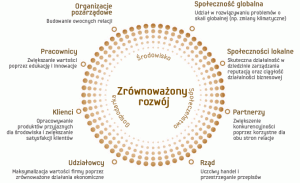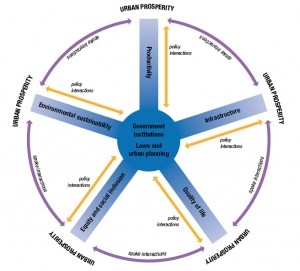Traditionally, a Smart City has been defined as a city that uses information and communication technologies to make both its critical infrastructure, its components and utilities more interactive, efficient, making citizens more aware of them. This part of the definition focuses on the wider information technologies. In a broader definition, a city can be considered as “smart” when its investment in human and social capital and in communications infrastructure actively promote sustainable economic development and a high quality of life, including the wise management of natural resources through participatory government [source: Azkuna I. (red.), Smart Cities Study: International study on the situation of ICT, innovation and Knowledge in cities, The Committee of Digital and Knowledge‐based Cities of UCLG, Bilbao, 2012]
The Reasearch Center of the Massachusetts Institute of Technology which deals with “Smart City” issues defines this term as the increasingly effective combination of digital telecommunication networks (compared to the nerves), ubiquitously embedded intelligence (the brains), sensors and tags (the sensory organs), and software (the knowledge and cognitive competence). This does not exist in isolation from other urban systems. There is a growing web of direct connections to the mechanical and electrical systems of buildings, household appliances, production machinery, process plants, transportation systems, electrical grids and other energy supply networks, water supply and waste removal networks, as well as systems that provide life safety and security of urban dwellers.
(source: Mitchell W., Intelligent cities, e-Journal on the Knowledge Society, 2007)
In smart cities Digital Technologies translate into a better access to and a higher quality of public services offered to citizens, better use of resources and limited impact on the environment. Smart City is a place where traditional networks and services are more efficient thanks to digital and telecommunication technologies, of benefit to inhabitants and companies. The European Union invests in research and innovation in ICT and strengthens its activities which aim to improve the quality of life of its citizens and to make cities more sustainable in the light of new EU 20-20-20 directives.
EU member states obliged to execute a plan of emission reduction, called 20-20-20. The plan includes to achieve the following goals by the year 2020:
- To reduce greenhouse gas emissions by at least 20% compared to 1990 levels
- achieve a 20% increase in energy efficiency
- increase the share of renewable energy in final energy consumption to 20%.
The European Environment Agency published a report which reviews progress towards meeting the requirements of 20-20-20 targets for the year 2014. It assesses how EU member states fulfill their obligations in this respect.
The report findings are optimistic. The reduction in energy consumption in EU member states in 2005-2012 has reached a level beyond the target that would allow to reach the 20% improvement in the EU’s energy efficiency. Also, the share of EU energy consumption produced from renewable resources was above the levels set for this year. EU greenhouse gas emission is also getting close to the 20% target, seven years ahead of time.
Between 2012 and 2013 greenhouse gas emission dropped in EU member states by 1.8% to the level 19% lower in comparison to 1990. It is estimated that by 2020 the emission level drops by 21%. If, however, the Energy Efficiency Directive is adopted (together with the binding targets for vehicle emission) as well as new regulations on fluorinated gases, then within the upcoming 5 years the emission goes down to the level 24% lower compared to 1990.
The concept of a smart city goes beyond applying information and communication technologies (ICT) for better use of resources and emission decrease. The concept is used for smart transportation systems, modernized water supply, neutralizing waste, effective lightning, heating or cooling of buildings. It also encompasses interactive and sensitive city governance, creating public space and fulfilling needs of the aging society.
The European Innovation Partnership (EIP) shall stimulate implementation of solutions to be applied in smart cities and communes. In 2012 the European Commission initiated the European Innovation Partnership for intelligent cities and communities. They are to link some European cities, business leaders and representatives of civil societies in order to revive urban areas in Europe.
So far, the European Innovation Partnership has received 370 eligible commitments for smart cities and communities in terms of financing and developing smart solutions in energy, transport and ICT. The commitments were submitted by over 3000 partners from Europe and they have a chance to pave the way for creating more attractive cities, both for citizens and the business sector. We will see if comfortable life in cities without a typical man-made mess but managed by technologies and monitored in all aspects, turns out to be happier.
This material has been published thanks to the financial support of the National Fund for Environmental Protection and Water Management. The sole responsibility for its contents lies with Collegium Mazovia.







Leave a Reply
You must be logged in to post a comment.